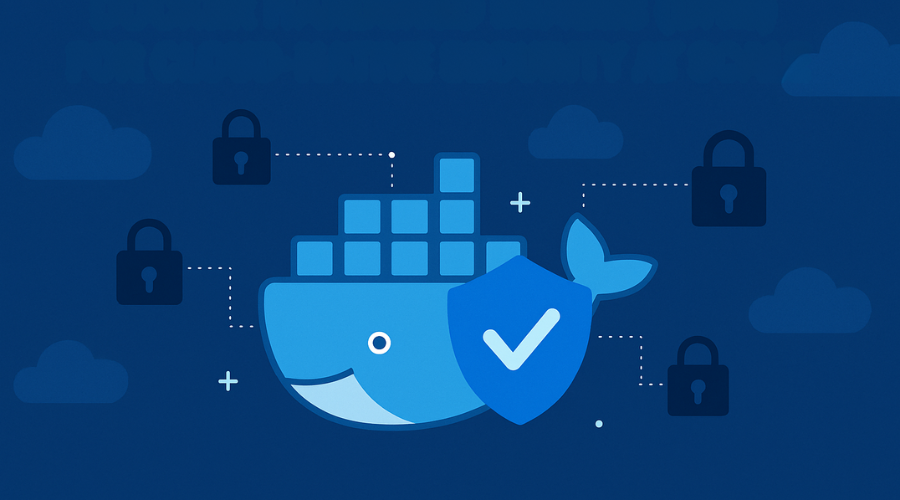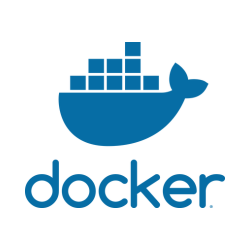The fast-moving, cloud-native environment of today has exponentially increased security risks. Organizations are increasingly transitioning workloads into container-based applications that are orchestrated by platforms such as Kubernetes, which allow enterprises to run applications in a scalable and performant manner. Such a transformation introduces a different security risk associated with the software supply chain. As a result, organizations are also increasingly looking to adopt Docker Hardened Images (DHIs) as a core element of trust in their container ecosystem.
What are Docker Hardened Images, and why do they matter?
Docker Hardened Images (DHIs) are vetted, security-hardened, and continuously verified Docker container images to meet enterprise-level security and compliance expectations. Created in consultation with various security partners and standards bodies, these images are published and maintained by Docker. They are built using a known upstream source, such as Red Hat UBI or Debian, with security hardening.
The main characteristics of DHIs are as follows:
- Minimal attack surface by removing unnecessary components
- Regular vulnerability scans and patches for vulnerabilities with recently published CVEs
- Cryptographic signing to establish image provenance and assure an even further lack of tampering
- FIPS-compliant builds for regulated environments
- For enterprises, DHIs create an important control point in the software supply chain.
For enterprises, DHIs offer a critical control point in the software supply chain. Rather than pulling arbitrary public images from Docker Hub or other registries, which may contain outdated packages or hidden malware, teams start from a vetted, secure baseline. This significantly reduces the risk of inadvertently importing vulnerabilities into production environments.
The enterprise security imperative in DHIs compliance and supply chain risk
The software supply chain has emerged as a popular target for attackers, and traditional perimeter security fails to apply to containerized workloads. In breach events such as SolarWinds and Log4Shell, attackers utilized insecure dependencies and poor hygiene of images to breach trusted systems. Enterprises cannot ignore the risks that third-party code in container images presents.
DHIs in particular directly address this challenge by providing:
- Secure-by-default base images, with known vulnerabilities removed prior to developers writing application code,
- Consistent patching and image updates that ensure critical CVEs are patched without requiring manual intervention,
- Compliance alignment with industry standards, such as NIST 800-53, PCI DSS, HIPAA, and FedRAMP.
For industries with heavy regulation, such as finance, healthcare, and government, DHIs provide a verifiable means to demonstrate auditors' requests for provenance and patch management. For example, a healthcare provider deploying patient data services in the cloud must prove the software environment being used meets HIPAA data protection requirements, which can be accomplished through DHIs, which provide both the documentation and technical controls without slowing innovation.
Operational efficiency and developer velocity with security without friction
There is a common theme among engineering leaders that security tools put friction into builds, slow them down, and even change developer workflows. DHIs are different because they don't hamper the tools and practices that teams are already using. With DHIs, developers can:
- Developers use familiar images, such as docker.io/ubuntu or docker.io/nginx, but the images are pulled from a trusted factory, a secure registry like Docker’s Verified Publisher program or Docker-Sponsored Open Source (DSOS)
- Automation pipelines remain intact because DHIs can pull directly into CI/CD workflows, so there is no need for custom scripts for hardening images or post-build scans.
- Image updates are predictable and stable, minimizing the risk of regressions or unexpected behavior during rollouts.
In addition, Docker offers SBOMs (Software Bill of Materials) with DHIs, allowing platform teams to inventory components, track dependencies, and respond quickly when a zero-day vulnerability is released; these are all important for resilient DevSecOps and quicker response time.
One of the other most overlooked advantages is standardization. By aligning all teams on a small set of approved hardened base images, enterprises can reduce drift, improve observability, and streamline security audits without impacting developer creativity or productivity.
Where DHIs are making a difference in industry use cases
1. Financial services containerizing legacy apps with confidence
Financial institutions are modernizing legacy Java or .NET applications and moving them into Kubernetes to perform at a greater level of agility. Nevertheless, these workloads are frequently running in environments that are also subject to strict compliance conditions like PCI DSS or SOC 2.
By utilizing the Digital Hardening Images (DHIs) as base images for containerized applications/services, the organizations are applying the operating system layer with continuous monitoring and patching. Plus, combined with runtime scanning and secrets management, this provides a strong layered defense-in-depth.
Example: A large bank has containerized its loan origination system using hardened Red Hat Universal Base Images (UBI). The DevOps team has put those into their Jenkins pipeline, which provides the team with automatic updates when they need to update patches. Thus helping the bank maintain PCI compliance and reducing both manual effort and time.
2. Healthcare HIPAA compliance without slowing down development
Startups and enterprise players alike in the healthcare sector are racing to build data-driven applications for patient care, diagnostics, and wellness. But handling protected health information (PHI) requires strict controls over the software environment.
DHIs provide the verifiability and controls needed to deploy apps in HIPAA-compliant environments, especially when used in tandem with encrypted volumes, audit logging, and zero-trust networking.
Example: A digital health startup launches a Kubernetes-based platform intended for the storage of diagnostic data. The use of hardened Debian DHIs enables them to show their cloud security partners that every container image adheres to baseline security and compliance expectations. This accelerates vendor risk assessments and simplifies certification.
3. Public sector and defense meeting federal requirements with FIPS validated images
Agencies and contractors that are supporting the U.S. government need to meet the FIPS 140-2 encryption requirements, among others. Deployed Docker Hardened Images provide FIPS 140-2 validated cryptography out of the box, fundamentally reducing the time and complexity required to build compliant systems.
For use cases where every component must be verified and approved, DHIs provide a trusted baseline that complies with federal procurement and security policies.
Example, A defense contractor is deploying a cloud-native application using AWS GovCloud. The engineering team's use of Docker FIPS-compliant images as a base image meant they did not have to manually compile and validate the cryptographic libraries for use in the application, which reduced their deploying time and process by weeks.
Building a secure and scalable cloud-native future
As organizations undergo their cloud-native transformation, the importance of securing the software supply chain while maintaining speed and flexibility is paramount. Docker Hardened Images (DHIs) provide a very compelling solution, delivering secure, compliant, and operationally efficient base images for containerized workloads.
Adopting DHIs allows organizations to significantly reduce risk introduced through known vulnerabilities in base images while improving compliance with industry regulations. These images are also designed to seamlessly integrate with CI/CD pipelines, enabling organizations to preserve speed in development cycles without adding friction to security. Additionally, they offer standardization across environments, which creates more operational consistency while allowing support for a wide variety of deployments across large teams and services.
In an environment where every container matters, beginning with a trusted base image is not just good practice; it is a requirement. For security teams, DevOps engineers and compliance officers, Docker Hardened Images quickly become the gold standard for building secure and scalable applications on the cloud.






